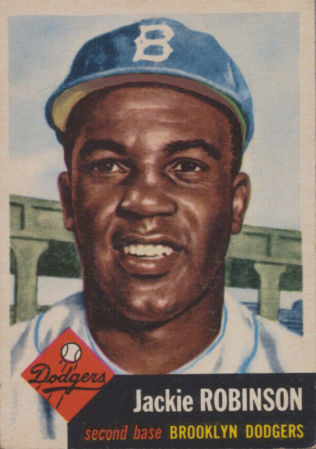Some time around 1949, when it became clear to Topps that their one cent version of Bazooka was going to be a monster seller, they started converting their "changemaker" Topps Gum, previously a traditional wafer "tab" (like penny Bazooka) into a Chiclets style product. This was a two-fold process.
First, Topps reconfigured the one cent version of their namesake gum into mint coated "nuggets" like this:
Those all carry 1949 copyrights and it's my understanding they were primarily meant for military field ration kits. I believe but cannot currently confirm, these one cent tabs also sold at retail. However, a five cent version certainly did and Topps made up a matchbook to promote the product:
That little chef mixing up a batch of ammoniated gum is today's quarry. It's hard to see but his toque says "Mr. Topps" in what is a quite mysterious advertising technique, i.e. obscuring your company name:
The packaging was eventually reconfigured:
I've blogged at length about Topps Gum over the years and won't rehash it here, just find and click on the appropriate label. What I haven't posted about though, is Mr. Topps long-lived career as a company pitchman.
Topps would, from time-to-time, refresh their Bozo ball gum product and by 1971 had come up with a colorful redesign of the packaging as this box top shows:
I'll be damned if that isn't our old friend Mr. Topps! He's been updated and lost the old toque but it's clearly the same character. Here's a closeup, he's got more cauldrons now:
Why Topps decided to use a character from almost a quarter century prior again is a question that will probably never be answered but I think it's pretty cool. Now, on to another cool thing...
Bozo ball gum was not affiliated with Bozo the Clown, although it's up-and-down past may indicate some legal battles with Larry Harmon had occurred. But what's funny is that the clown was originally created as a macot for Capitol Records in 1949 and they sold various rights and licenses to the character to Harmon in 1956. The two corporate entities were getting along well enough by 1979 1969 to combine forces for this oddball product:
(UPDATE: 6/14/23: Snack food wizard Jason Liebig via Friend o'the Archive Lonnie Cummins advises this is a 1969 product).
Here's the commodity code:
So the product you would think best associated with Bozo the Clown didn't make the cut and Topps went with Gold Rush instead, for what looks to be a very scarce package. There would also seem to be some additional train cars in the series, which I'm guessing never made it to a full retail release.


























